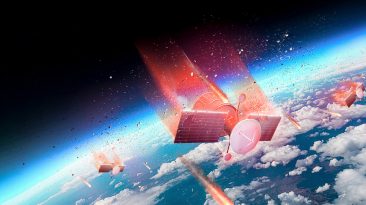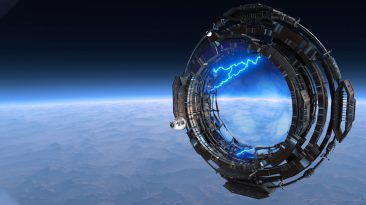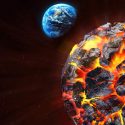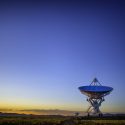By the year 2035, NASA plans to send humans to Mars. But it would be about a nine-month trip with our current rocket technology. However, in the not-so-distant future, we could be replacing chemical engines with nuclear thermal propulsion.
That would take you to Mars in just three months. What are the risks of using nuclear propulsion? How would it work? Have we used nuclear energy in space before?
Nuclear propulsion would open up space exploration, but there are some serious challenges that we would have to overcome first. The nuclear engines would need to be safe and lightweight. And that isn’t easy to achieve since they’d be operating at a temperature of 2,430 °C (4.406 °F).
And this wouldn’t be the first time we would try using nuclear power in space. In 1958, Project Orion was a rocket design that tested a nuclear propulsion system. And, let me tell you, it was bizarre.
Instead of using anything that resembles our current rocket engine, Project Orion used blastwaves to propel the spaceship forward. Yes, you heard me. Blastwaves. Orion would eject small nuclear bombs behind it, one at a time. A few seconds later, boom. The coffee can-sized bomb detonated.
Plasma from the explosion would catch up with Orion’s back, then hit a thick, shock-absorbing plate. This would protect the ship from the radiation, and move it forward. Every time a bomb detonated, the space vessel would gain speed.
The idea was that by using this technology, you could increase velocity so much that you could reach any point in the Solar System in one year. But the idea of casually detonating nuclear bombs in space didn’t sit well with a public that already feared nuclear power. So Project Orion was terminated. Fast forward to today, and we have a new opportunity to use nuclear power in space. But not by using bombs.
ALT for transition from host read: Instead of using bombs to get to Mars, we’d use a nuclear thermal propulsion system with a reactor core. Instead, we’d use a nuclear thermal propulsion system with a reactor core. This reactor core would be eight times hotter than nuclear-power-plant cores. It would heat fuel, in this case liquid hydrogen, to 2,430 °C (4,406 °F), turning it into a gas and creating thrust.
Right now, the nuclear thermal propulsion system would use fission to heat the reactor core. Fission splits a larger atom, usually uranium, into at least two smaller atoms.
But in the future, when we’ve got the right technology, we could use fusion instead.
Fusion is the opposite of fission. It would join at least two smaller atoms into a bigger one, releasing up to four times more energy than fission. That would be one energetic rocket. Wow, that’s very impressive.
And a quicker space trip wouldn’t just be convenient. It would also be safer for the crew. Astronauts are exposed to cosmic radiation when they’re in space, which can cause serious long-term health issues. Radiation shielding could help, but it’s extremely heavy.
And the longer the mission, the more shielding you’d need. So by reducing your time spent in space, you’d limit the crew’s health risks, and the mission would cost less. And we’d use these rockets for more than transportation.
Once a rocket has reached its destination, the nuclear reactor could switch from a propulsion system to a power source. So what are the drawbacks to nuclear thermal power? Well, you could only use this system when the vessel is in space. It would still need chemical thrusters to leave Earth.
There could be a lot of radiation effects, so the farther away from Earth’s atmosphere it is before the NTP systems switch on, the better. The word nuclear sets off a lot of alarm bells. We’d be dealing with explosive, radioactive material, after all. But the nuclear propulsion system would be designed so that even if there were a launch failure, only a minimum amount of uranium would disperse, reducing any radioactive spills.
Scientists have studied this type of engine since the late 1950s, but it hasn’t flown in space yet. Regulations and lack of funding have slowed its development. But in 2019, NASA received $100 million to develop nuclear thermal propulsion, making their 2035 plan of sending humans to Mars much more achievable. Nuclear energy could be future of space exploration. Now what if we used it on Earth as our only fuel source?
Sources
- “Fission And Fusion: What Is The Difference?”. 2021. energy.gov.
- “Shielding Development for Nuclear Thermal Propulsion” 2021. ntrs.nasa.gov.
- “6 Things You Should Know About Nuclear Thermal Propulsion”. 2021. energy.gov.
- ” Uranium Enrichment | Enrichment Of Uranium – World Nuclear Association “. 2021. world-nuclear.org.
- “How Long Does It Take To Get To Jupiter? – Universe Today“. 2016. Universe Today.
- “Our Spaceflight Heritage: Project Orion, A Nuclear Bomb And Rocket – All In One”. Klaes, Larry. 2016. Spaceflight Insider.
- “How Long Does It Take To Get To Jupiter? – Universe Today”. 2016. Universe Today.



























